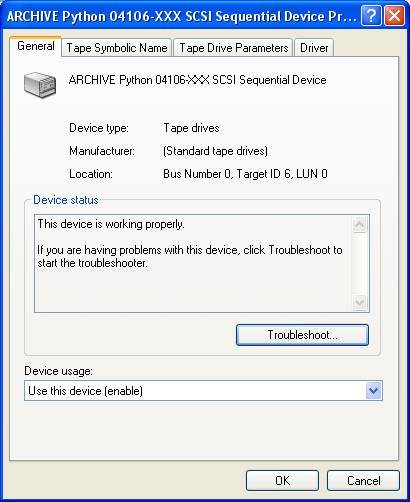Veritas Software TapeDrive Driver
Veritas NetBackup - known as Symantec NetBackup from 2005 to 2016 - is a backup and recovery software suite designed for enterprise users. When security giant Symantec acquired Veritas for $13.5 billion in 2005, the NetBackup product was renamed Symantec NetBackup. In 2016, when Symantec spun out its Veritas storage unit, NetBackup again. Veritas Backup Exec, Veritas, Backup Software, Tape Drive Software, Backup Exec, A Global Value-Added Distribution of new, used and refurbished computer periphery by a family-owned and operated company since 1979; distributing computer related peripherals on the new, used and refurbished levels.
Troubleshooting Checklist
VERITAS Software Corporation makes no warranty of any kind with regard to this manual, including, but not limited to, the implied warranties of merchantability and fitness for a particular purpose. If you use this tape and the instructions on this page, you will be able to successfully install the Veritas software on the RELOPS/DSS OpenVMS Alpha servers. Due to the complex nature of the OpenVMS system, it is recommended that this installation be performed by, or done while under the supervision of, the OpenVMS Systems Administrator.
Veritas Software Tape Drive Driver Updater


Please perform the suggestions in this checklist prior to calling Technical Support. It is quite possible that your issue may be resolved by checking these items.
Veritas Software Tape Drive Driver Download
This Troubleshooting Checklist is also located in the Tandberg Data Support Knowledge Base.
Clean your tape drive.
Simply cleaning your tape drives on a regular basis will often solve issues with writing or reading data. More information on how and when to clean your drives can be found in the Knowledge Base under Do I need to clean my tape drive?
Update your device firmware.
By using the latest released firmware in your tape drives, autoloaders and libraries, you will avoid any problems in older firmware versions which may have already been fixed.
Check your bus configuration and cables.
Improper bus configuration or bad cables are by far the most likely culprits when facing issues such as:
Devices not being seen in the operating system.
Intermittent or unexpected 'I/O' errors.
Losing communication with a tape drive during backup.
Event ID 9 or 11 errors in Windows operating systems.
Unexpected bus resets.
Parity errors.
Check your Operating System and backup application configuration.
Check if your backup application supports your tape drive, autoloader, or library. It may be necessary to install device support patches from your application vendor. Check the vendor's website for details about your specific configuration.
Check if the appropriate driver is loaded for your bus controller. Refer to the installation instructions for your controller.
Check if the appropriate driver is loaded for your Tandberg Data tape drive. Windows drivers for Tandberg Data products are provided primarily for use with the Microsoft native backup application. Do not install the generic Windows drivers if you are using a third-party backup application, unless directed to do so in the application installation instructions.
Check the Tandberg Data Knowledge Base for integration tips on various operating systems such as Solaris, Linux, AIX and more.
Try a new tape.
A worn or damaged tape may result in write or read failures. Keep track of which tapes fail during write or read. If you notice that a particular tape has failed more than once, mark that tape as questionable and do not use it for critical backups.
Run an Internal Self Test.
An Internal Self Test performs a series of tests designed to eliminate all outside factors and determine if the drive is functional. The test does not use software or operating system drivers, does not write data from the server and does not access the SCSI bus when testing the drive.
Drives that pass the Internal Self Test are deemed to be functioning properly.
